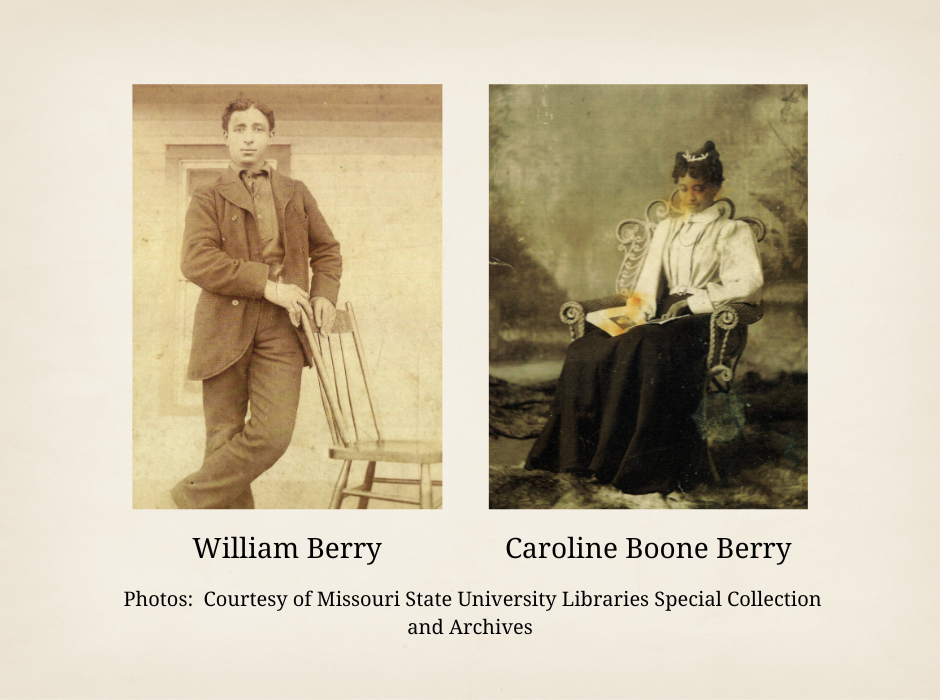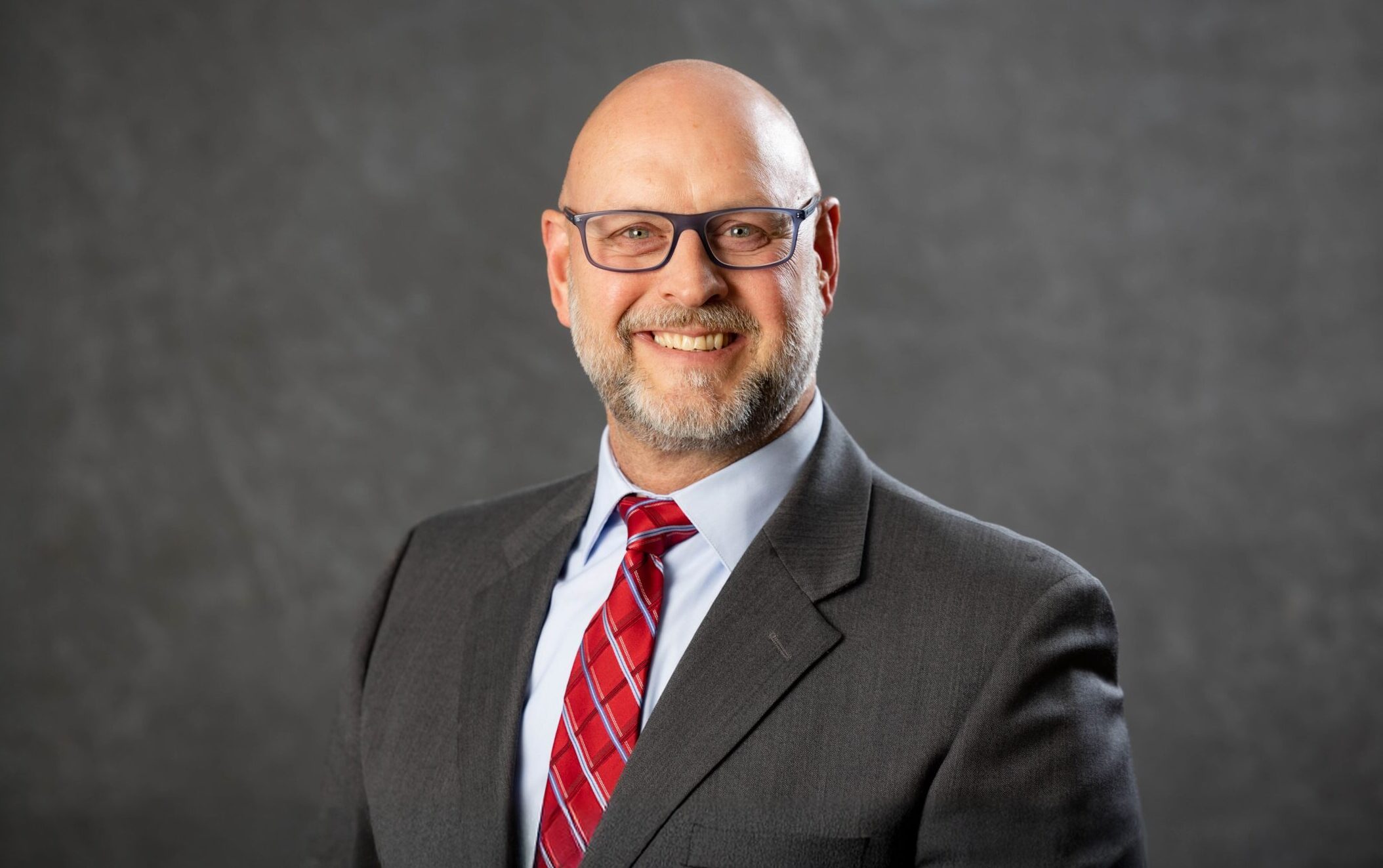Caroline Boone Berry (1850-1914) and her husband William Berry (1848-1917) established the Berry Cemetery around 1880. The cemetery is still actively being used. Its website makes the strong argument that it is the oldest cemetery for and continuously owned by Black people in Greene County and likely the region. It is on the National Historic Register (2004).
Caroline was born and raised in slavery on one of the Boone family properties near Ash Grove. It is likely that it was on the Nathan Boone Homestead, now a Missouri State Historic Site. The white Nathan Boone, son of frontiersman Daniel Boone, is believed to be Caroline’s father. William Berry is believed to have been born free in the south. He moved to Ash Grove, Missouri, in 1870. Caroline and William were married two years later. In 1876, they purchased property in downtown Ash Grove, but in 1881 they purchased a forty-acre farm outside of town and dedicated one acre for a burial ground for, according to a 1910 document “the burial of slaves, Indians, and paupers.” They may have been living on the land and have begun the cemetery prior to the official purchase.
Cemeteries were segregated in the area, and there was a need for a cemetery where any Black person could be buried. The municipal cemetery was white only, and Black individuals who died did not necessarily have an appropriate area for burial unless they owned acreage and were buried there or a place they were working or living had a Black cemetery. For instance, the Nathan Boone Homestead has two cemeteries one for whites and one for Blacks. The Black one was established for slave burials.
There are at least seventy-three burials in the Berry Cemetery, some of which are unmarked. However, a marker was erected that lists the names of the known individuals who are in unmarked graves. It also recognizes that others whose names are unknown were buried their including Indigenous Peoples.
In 1998, Fr. Moses Berry, his wife Magdalena and their children moved to the property and began work restoring the cemetery. Fr. Berry was the great-grandson of Caroline and William Berry. He inherited the land after the deaths of elderly relatives. The cemetery had rare new burials after the 1950s and needed restoration. They took on the necessary work to restore the cemetery. In 2006, the cemetery was given a new name, Holy Resurrection Cemetery, but the original name, Berry Cemetery is also still used as it has been for generations. Today, it is used for burials for both the Black community and members of the Unexpected Joy Greek Orthodox Church (regardless of race), which Fr. Berry founded.
Cemeteries are by nature a legacy and memorial of those buried there, but this cemetery is also a living legacy of the Ash Grove Black community and the Berry family who have safe-guarded, and preserved it for over 140 years.
By Joan Hampton-Porter,
Curator, The History Museum on the Square





